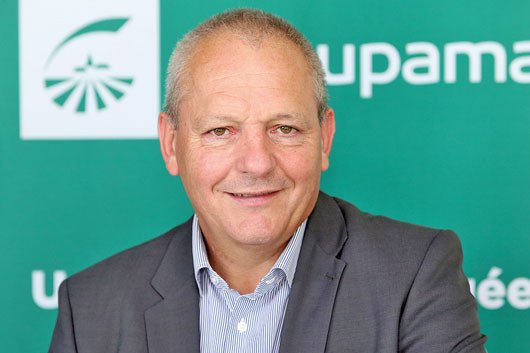François Schmitt, Chairman of Groupama Grand-Est: “It is about rebuilding the logic of resilience in operations made possible by insurance, in the face of climatic hazards”.
Published on: October 28, 2022
While the reform of multi-risk climate insurance (MRC) is entering its concrete phase, François Schmitt, chairman of Groupama Grand-Est, discusses the reasons that led to this development, in his eyes “historic”. Groupama has planned to organize meetings to inform the farmers.
Why is this reform so important?
François Schmitt (FS): We are not always aware of its historical character. The system of agricultural disasters was introduced in 1964, and since then there have been adjustments: climatic multi-risk in 2005, withdrawal of field crops in 2009, viticulture in 2011, establishment of a basic contract in 2015. But the upcoming reform, as far as the adjustment is concerned of agricultural risk management, is to an unprecedented extent! It is a matter of completely rebuilding the logic of insurance-enabled farm resilience in the face of climatic hazards.
How did the need for this reform arise?
FS: Within the Council for French Agriculture (Caf), where Groupama is a neighbor of FNSEA, JA, the National Confederation of Mutual Funds, Cooperation and Agricultural Credit (CNMCCA), we were among those who drew attention to a development that was considered as very worrying: since 2012 we have faced recurring climate risks (frost, drought, hail, excess water, etc.) which have led to a structural deterioration of the technical balances of the historical insurance companies on the French farm. The café began a reflection in 2019 on the relevance of insurance tools.
The observed technical deterioration called into question the way in which these problems could be tackled. We feel that since 2012 we have changed our environment. Every year there has been a problem, and the frost of 2021, disastrous for tree and viticulture, acted as a catalyst: the public authorities realized that the system needed to be revised. In just over fifteen years, Groupama in France has paid more than 500 million euros in compensation related to these dangers…
What changes will the reform concretely bring about?
FS: If until now there has been coexistence between private insurance and the disaster fund, with the reform there will be a real connection between these two tools. It is a three-stage rocket: the first is the part of the loss that remains the responsibility of the farmer, the excess, which varies from 0 to 20% of the losses, regardless of the sector. The second phase is the intervention of the insurance companies, for which the farmers pay a contribution which will be subsidized, up to 70%.
The public authorities wanted to act to promote traditionally underinsured agricultural sectors (tree cultivation or grassland) by allowing a reduction in the insurance contribution. The third phase of the rocket is the National Solidarity Fund (FSN) part. There is one very important change: an insured person will be compensated for the total loss, in addition to 50% for field crops and viticulture and in addition to 30% for meadows and tree cultivation. 10% of the loss is reimbursed by his insurance company and 90% by DSF. If, on the other hand, the person is not insured, FSN only covers 45% of the loss. This amount will be applicable in 2023, but in 2024 it will be only 40% and 35% in 2025, only in the sectors for which there is an insurance offer. For the other sectors, the amount remains fixed at 45%.
Tomorrow, taking out an insurance contract will mean that you are assured of 100% compensation for the rocket’s third stage. At Groupama, we have already made the decision to offer contracts with excess levels above 20%. Access to national solidarity will be allowed by signing a contract. With a subsidy rate of 70% for the contribution and a more limited scope of the insurance’s intervention, for almost all farmers there will be a reduction in the remaining amount to be paid. I encourage everyone to consult their insurance company to do simulations…
BR
To find out more, find this full article in our October 28, 2022 issue.
.
